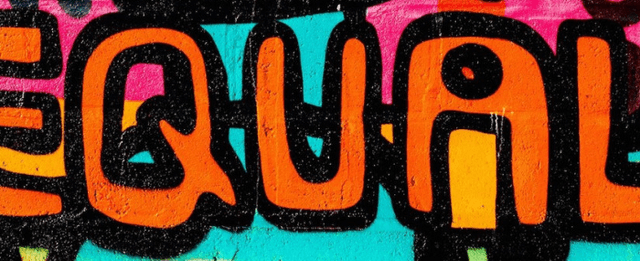The Opportunity Cost of Lost Opportunities
The Peril We Face
Whether by choice or circumstance, over four million American young people between the ages of 16–24 are neither in school nor working and are therefore disconnected from many present and future opportunities. We call these young people “Opportunity Youth” because of the great potential that would be realized—for them personally and society broadly—if we tap into their currently inert promise.
Youth disconnection is a national concern, and it is particularly challenging in Memphis, the city I have called home for over 15 years. We have one of the highest concentrations of Opportunity Youth (approximately 20 percent) among all large U.S. cities. Of the 45,000 Opportunity Youth in our metropolitan area, estimates show that 10,000–15,000 have not graduated from high school.¹ Currently, the pathways to accessing the education, certification and work options that lead to meaningful employment are next to zero. Yet, even if access to those things did exist, we still have to grapple with the issues that created the disconnect to begin with. These include chronic health and mental health challenges (for the individual or family members), teen pregnancy, unstable housing, and inadequate transportation options.
Over the past decade, the US has made progress in decreasing the overall number of disconnected young people, but the arrival of the coronavirus has most likely eliminated those successes. Beyond the rapidly rising unemployment rate and abrupt shift to online schooling from pre-K to college, the pandemic further revealed inequities in access to resources and connectedness—from internet to healthcare. Under-resourced communities will be the hardest hit and will have the most trouble recovering. In Measure of America’s latest report, A Decade Undone: Youth Disconnection in the Age of Coronavirus, author Kristen Lewis warns, “Areas with high rates of disconnection are at risk of falling even further behind amid this viral storm. They are the communities with the least resilience; they will face greatest difficulty bouncing back after the pandemic passes.”
While Opportunity Youth are not helpless (over 75 percent believe they are personally responsible for their education and employment), they are playing with a deck that is largely stacked against them. As Measure of America reports, it is clear that these young people, “face challenges beyond what they can tackle alone” and tend to live in communities that are “disconnected from the mainstream by segregation and concentrated disadvantage.” Their report explains that most communities are “fighting the symptoms of youth disconnection instead of addressing its root causes.” The solution to this issue is “knitting disconnected, opportunity-scarce communities into the fabric of our wider society and creating meaningful pathways within them.” Sounds like we need to do a lot of knitting—and fast.
We desperately need to stitch a new societal fabric that will help currently disconnected youth earn a high school and/or college diploma and find meaningful employment. These viable pathways to success will enable young people to craft lives of purpose and destiny instead of just survival.
The Price We Pay
Re-engaging these young people with our broader society and economy would benefit all of us. Though the financial advantage is only part of the story, it is jaw dropping.
An economic analysis² shows that in a given year each Opportunity Youth represents an immediate tax burden (real costs) of $13,900 and a social burden of $37,450 (lost productivity). In the absence of our willingness to build meaningful onramps for these youth, these costs soar to $258,240 and $755,900 respectively over the person’s lifetime. Assuming a cohort of 4,000,000 Opportunity Youth, the collective costs equal a taxpayer burden of $1.03 trillion dollars and a social burden of $3.02 trillion dollars.
When the potential of Opportunity Youth is not tapped, we literally pay trillions for it.
The Path We Need
Across the nation, people are realizing that disconnected youth are not problems to be solved but, rather, assets to be nurtured. From Future Focused Education in New Mexico to The Collective in Memphis, there is a growing movement to unleash the potential of Opportunity Youth. Indeed, the language that we use matters. We need a “stained-glass window” mindset. In this theory, educator David Hill argues, we should create environments that encourage young people to “give their very best” because that is “altogether more desirable than simply keeping the worst in young people at bay.” Our city will benefit tremendously when our currently disconnected youth give—and we receive—their very best.
It will truly take a collective effort to create the conditions for Opportunity Youth to give us their best. We all have roles to play—that includes educational institutions, community facing non-profits, government, workforce development groups, corporations, and philanthropy. Together, we need to increase our collective expectations of, and support for, Opportunity Youth. As an educator, I know that what Jaime Escalante, the all-time great teacher, said was true: “Students will rise to the level of their expectations.” This is true for all people.
Still, expectations alone are insufficient to address this crisis. We need new and thoughtful public policy and the accompanying resources that makes it easier for Opportunity Youth to succeed.
For example, consider the policy change Tennessee made in 2017 that lifted onerous requirements for salons. The original law made it impossible to make a living shampooing hair due to overly complicated licensures. It was doing more harm that good. Now, thanks to that policy change, stylists can better support themselves and their businesses.
Similar thoughtfulness will be needed in a variety of policy arenas that impact Opportunity Youth. Shouldn’t we make it easier for them to apply their skills for the benefit of themselves and society?
While the world of poverty and its related challenges coupled with the COVID-19 pandemic have been hard on Opportunity Youth, Seeding Success reports that these youth “remain hopeful that they can achieve their academic and career goals.” I share this optimism. Do you?
If we will believe in Opportunity Youth and turn that faith into action, we can place young people on a path to productivity and prosperity. We can begin knitting a new social fabric that is so much stronger with them included. Our disconnected young people are truly filled with opportunity, and we must help them realize it—for themselves, our city, and our nation. In doing so we will be one step closer to ensuring that the practice of America is equal to the promise of America.
Sources
- (1) “Zeroing in on Place and Race: Youth Disconnection in America’s Cities,” Measure of America, June 2015
- (2) Belfield, Levin, Rosen. The Economic Value of Opportunity Youth. New York. City University of New York and Columbia University, 2012



Comments
Thank you.